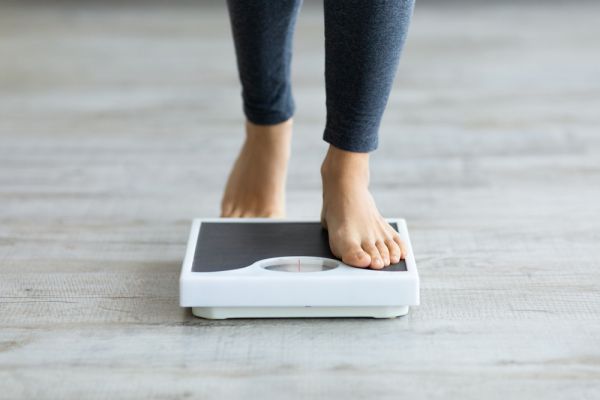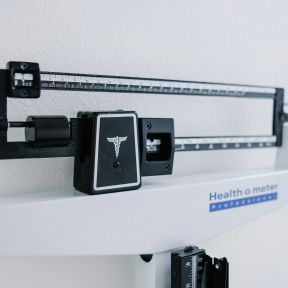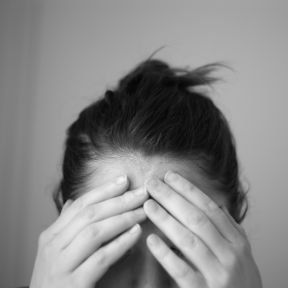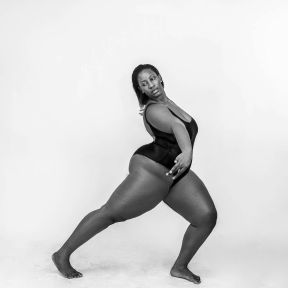
Body Positivity
Body positivity is a movement to accept bodies of all sizes and types, rather than those that conform to societal ideals of beauty. It emphasizes self-acceptance, inner worth, and appreciation for a body’s abilities.

The body positivity movement grew out of the fat acceptance movement of the 1960s. The fat acceptance movement was created by Black and queer women to fight the discrimination and shame they faced due to their weight. Body positivity emerged from these roots. The movement champions acceptance and love for all types of bodies. It challenges cultural ideals of beauty and societal perceptions and expectations around the body. It calls attention to unhelpful or harmful messages people may have received about their bodies from individuals, media, or society. And it promotes a healthy relationship with the body through awareness and acceptance.
Despite its origins, one critique of the body positivity movement today is its lack of inclusivity; marginalized bodies are rarely centered. On social media, for example, body positivity is often exemplified by thin white women with bodies that society deems socially acceptable. The bodies that are most marginalized then continue to be marginalized while the bodies that are privileged continue to take center stage.
There are several other critiques as well. One is that corporations and celebrities have trumpeted the movement through new products and campaigns, yet they often continue to promote a narrow framework of beauty. Another is that body positivity overemphasizes appearance compared to other elements of identity and experience. Yet another is that some people may not resonate with pressure to feel positive about their bodies or may take unhealthy steps in the name of feeling positive about their body.
People can become more body positive by identifying what their individual body needs in terms of hunger, fullness, movement, and rest. Through trial and error, they can learn about their bodies, and be kind to themselves if they make mistakes along the way.
Additionally, people can examine the messages they’ve received throughout their life about health, weight, food, and exercise. These messages may have come from friends, family, social media, advertisements, and the broader culture. They can then reflect on which messages have been helpful and which have been harmful to recognize which beliefs they should aim to keep or change.
A recent study found that women who promoted body positivity to a friend by writing a letter appreciating their body’s functionality ended up feeling more positively about their own body as well. One hypothesis for this finding was that the activity shifted the participants’ focus away from physical appearance and toward the body’s abilities.
Some proponents of body self-acceptance have embraced the term “body neutrality” instead of “body positivity.” Body neutrality also prioritizes functionality over appearance, but it also removes the expectation of specific feelings toward the body, such as positivity, allowing for neutrality instead. Some believe that body neutrality is a more realistic and preferable goal for those who have struggled with severe body dissatisfaction, eating disorders, or a history of trauma.
Some believe that the body positivity movement overemphasizes the appearance of bodies and minimizes or evades the differences in privilege afforded to those who meet the white and thin proportionate ideal. The body positivity movement has largely been perpetuated by and benefitted white women. “The movement puts the onus on individuals to change their feelings toward their bodies without resisting the systems that marginalize nonnormative bodies,” writes The Research Lab.
Additionally, body positivity may become problematic if it emphasizes the physical appearance of bodies over the appreciation of and inherent dignity of the body. A positive relationship with appearance isn’t bad, but it is incomplete. Engaging the world through a body—including breathing, moving, eating, and aging—is more than appearing in a body.
The extent to which this movement is as positive as its name suggests has been called into question. In a recent study evaluating the body positivity movement on Instagram, psychologists sought to determine the extent to which posts using the body positivity hashtag, #bodypositivity, provided positive messages about body image. Some body positivity accounts turned out to contain contradictory messages; messages of self-acceptance appeared alongside or within posts promoting weight loss.
The researchers also found that 43 percent of the bodies depicted in #bodypositivity posts were of individuals with larger bodies. Although this is less than half, it’s also more representative of the average person than posts offered as “thinspiration” or “fitspiration.”

The body positivity movement underscores the challenges people face regarding body image and cultural attitudes. Addressing these challenges is important because negative body image can harm self-esteem, well-being, and mental health. In some cases, negative body image may contribute to disorders such as body dysmorphic disorder, eating disorders, anxiety, or depression.
Eating disorders involve a persistent disturbance of eat­ing that changes the consumption or absorption of food so that it significantly impairs the person’s physical health and or psychological functioning. Eating disorders include anorexia nervosa, bulimia nervosa, binge-eating disorder, pica, rumination disorder, and avoidant/restrictive food intake disorder. (For more, see Eating Disorders.)
Body dysmorphic disorder involves a preoccupation with perceived defects or flaws in one’s physical appearance. The person believes that these flaws make them look unattractive or abnormal, yet they are extremely minor or completely unnoticeable to others. The person may perform repetitive behaviors, such as constantly monitoring their flaw in the mirror, and the preoccupation causes significant distress. (For more, see Body Dysmorphic Disorder.)
Research suggests that body dysmorphia affects somewhere between 0.07 and 2.3 percent of the general population. But many people experience negative body image at times that don’t rise to the severity of a disorder.
Body dissatisfaction also affects men and women differently: A large study conducted in Germany found that body dissatisfaction was higher in women than in men and that the importance of appearance was higher in women than in men.
Body image encompasses the perceptions, feelings, thoughts, and actions that pertain to one’s physical appearance, and these components can shift into a negative realm for many reasons. Pressure to conform to beauty standards, social comparison propelled by social media, and mental health factors such as a genetic predisposition to anxiety or obsessive-compulsive disorder may lead to body dissatisfaction or, in some cases, a related mental health condition.
Several strategies can help improve body image. People can practice self-compassion and gratitude for their body’s abilities. They can meditate on what’s most important in life and how to allocate more time and attention to those domains. They can reflect on what kind of person they want to be and take small actions to align with those qualities. It can also be beneficial to take time away from social media, reach out to loved ones, and perform acts of kindness.














